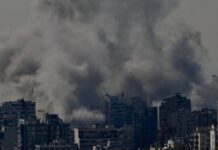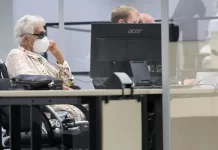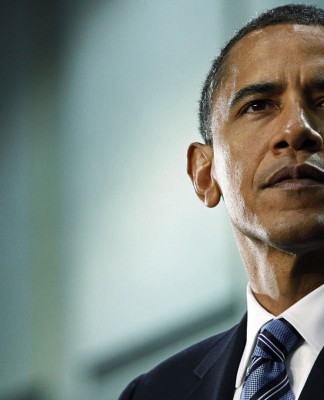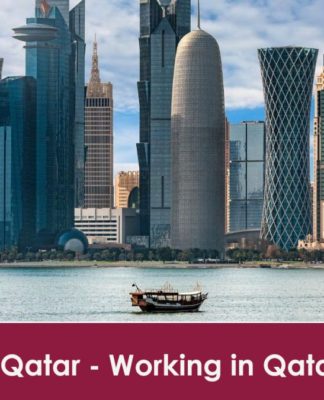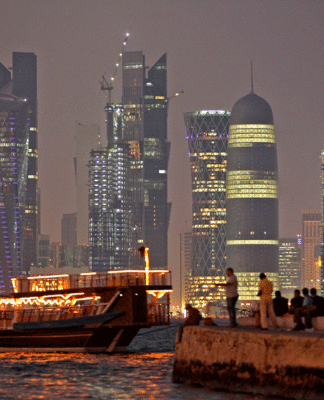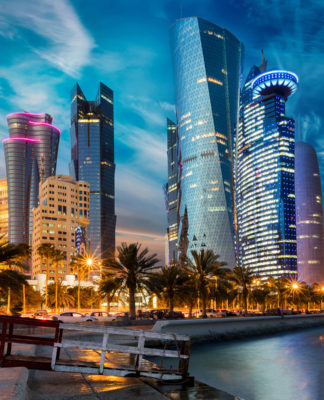THERE USED TO be an established order to the world. A structure to things. You couldn’t print a gun like a term paper. It was impossible to wreck a nuclear production plant with a few lines of code. Flying robots didn’t descend on you in the dead of night and kill you in your home.
But that order has been upended. Cheap videos in California help spark riots in Cairo. Lynchpins of the Middle East now rant about ‘Planet of the Apes’ in public, and Iranian generals trash-talk David Petraeus over SMS. The world has gone a little haywire — sometimes for better, sometimes for worse. Here are our choices for the 15 people most responsible for making it that way.
Who did we miss? What did we get wrong? Sound off in the comments, or find us on Facebook or Twitter (we’ll retweet the best suggestions).
— Noah Shachtman
Above:
15: PAULA BROADWELL
One day you’re pitching a biography of a top general. The next you’ve brought down a CIA director, stalled the career of another top general and ensnared numerous federal agencies — and yourself — in a sprawling investigation-cum-media circus. Paula Broadwell didn’t mean to wreck any careers, but she accomplished something that no U.S. adversary could: remove David Petraeus from the U.S. government.
Broadwell, a former Army intelligence officer, developed an unhealthy attraction to Petraeus. What started out as spinning for Petraeus’ Afghanistan strategy and a florid book became a full-blown affair once Petraeus became director of the CIA. All that would have stayed between the two lovers — had Broadwell not used an anonymous e-mail account to berate Jill Kelley, a Tampa socialite whom Broadwell considered unduly flirtatious with the military brass. Kelley turned to an FBI agent she knew, Frederick W. Humphries II, to open a cyber-stalking investigation.
The feds don’t usually pursue cyber-stalking cases. And this one ended without any charges filed against Broadwell — but not before uncovering poor data hygiene from Broadwell’s famous paramour. Petraeus and Broadwell shared a password on an e-mail account and would pass messages to each other by saving e-mails as drafts. What’s more, Broadwell got into the habit of talking openly about sensitive CIA operations, like its response to the September attack on the U.S. consulate in Benghazi. It’s unclear whether there will be any charges filed against either Broadwell or Petraeus over classified material discovered on Broadwell’s computer.
Petraeus, the most celebrated general of his generation, resigned in humiliation. The FBI inquiry also turned up what the Pentagon called “flirtatious” e-mails between Gen. John Allen, the outgoing Afghanistan war commander, and Kelley, which has now blocked Allen’s promotion to NATO commander. What’s more, the coming reshuffle in President Obama’s national security team has reopened a debate into whether the CIA should back away from Petraeus’ torrid pace of drone strikes. Petraeus, and not Broadwell, is ultimately responsible for his own poor decision-making. But the next time a cabinet official sleeps around, he’d better make sure his mistress keeps the affair offline.
— Spencer Ackerman
Photo: AP/Nell Redmond

14: CODY WILSON
Cody Wilson, a 24-year-old law student at the University of Texas, didn’t invent the concept of printable, downloadable guns. He’s only created the first platform devoted to sharing the blueprints online for free to anyone who wants one, anywhere in the world, at any time. Wilson and his group of amateur gunsmiths, known as Defense Distributed, are also currently working on producing what may become the world’s first fully 3-D printed gun, which they call the “Wiki Weapon.” If it’s successful, and on a long enough timeline, it could change the way we look at guns — and make them.
But realizing this hasn’t been easy. After leasing a 3-D printer from additive manufacturing firm Stratasys in late September, the company got wind of Wilson’s plans and revoked its lease, then quickly dispatched a team to Wilson’s apartment to seize the machine. “They came for it straight up,” Wilson told Danger Room after it happened. “I didn’t even have it out of the box.” He’s been questioned by the Bureau of Alcohol, Tobacco and Firearms over concerns he may violate federal law. Wilson has since sought a firearms manufacturers license from the ATF, which has yet to be approved, and has secured access to printers from a sympathetic company in the Austin area, plus a range in San Antonio where the group tested its first prototype. That prototype only lasted six shots, but the possibilities being introduced are huge. What happens to gun control when anyone can download and print a gun with their computer?
Wilson and the Wiki Weapon project have also become something of a test case for how far a group can push those legal limits. “It is just a matter of time before these three-dimensional printers will be able to replicate an entire gun,” Rep. Steve Israel (D-New York) said in December while urging for a renewal of the Undetectable Firearms Act, which outlaws guns that can defeat airport metal detectors. Josh Horwitz of the Coalition to Stop Gun Violence, wrote: “The Wiki Weapon project is not the work of a dispassionate techie seeking to push the outer limits of modern technology. Instead it is a blatant, undisguised attempt to radically alter our system of government.” That may actually be true. “How do governments behave if they must one day operate on the assumption that any and every citizen has near instant access to a firearm through the Internet?” Defense Distributed asks on its website. The answer may only be a matter of time.
— Robert Beckhusen
Photo: courtesy of Marisa Vasquez

13 AND 12: MATTHEW DOOLEY AND MARK BASSELEY YOUSEF
Two successive White Houses have been at pains to emphasize that the U.S. is not at war with Islam. In 2012, two little-known individuals did their best to undermine that goal.
Mark Basseley Yousef is a man of many names (Kritbag Difrat, P.J. Tobacco, Nikoula Basseley Nakoula) and one dubious accomplishment: producing a film, “The Innocence of Muslims,” that went viral and prompted riots around the Middle East for its disrespectful portrayal of the Prophet Muhammad. (For a while, the Obama administration blamed the video for the attack on the Benghazi consulate, but later abandoned that narrative.) As much as Yousef sought to cast Islam in a negative light — something repudiated by his movie’s cast and crew — Yousef’s own criminal antics quickly overshadowed his creation. He’s been jailed for charges related to manufacturing PCP and using false names for fraudulent checks. After he used the name “Sam Bacile” to help produce “The Innocence of Muslims,” a judge ruled Yousef violated the terms of his probation and sent him back to jail in September.
Army Lt. Col. Matthew Dooley didn’t do nearly as much damage to U.S. foreign policy. But the chairman of the Joint Chiefs didn’t take any chances after learning in March that Dooley taught a course for senior military officers that mused about a “total war” on Islam — including “Hiroshima” tactics against Islam’s holiest cities. Gen. Martin Dempsey suspended the elective course at the Joint Forces Staff College, calling it “totally objectionable,” and ordered a comprehensive review of military education to weed out similar material. Dooley, a formerly well-regarded officer, got an administrative reprimand and was shipped out to a bureaucratic backwater of the Army. His defenders have threatened to sue Dempsey and portray Dooley as a free-speech martyr, but so far their threats have been about as substantial as Yousef’s multiple identities. Still, Dooley and Yousef showed that random Islam haters can leave a huge impact.
— Spencer Ackerman
Photo: AP/CBS2-KCAL9
11 AND 10: THE STEALTH JET WHISTLEBLOWERS
The F-22 Raptor is supposed to be the future of the U.S. Air Force — stealthy, lethal, and generations ahead of any dogfighter on the planet. But that future was called into question in 2010, when one of the stealth fighters crashed under mysterious circumstances in Alaska, killing pilot Capt. Jeffrey Haney. Citing problems with the planes’ oxygen systems that were choking the pilots, the following May the Air Force temporarily grounded all 180-plus Raptors, depriving the U.S. of nearly half of its front-line air-defense force.
In a hurry to get its most high-tech plane back in the air, the flying branch blamed “contaminants” and hastily installed an extra charcoal filter in the F-22s. The $400 million Raptors went back into action. That’s when Maj. Jeremy Gordon and Capt. Josh Wilson, both experienced Raptor fliers with the Virginia Air National Guard’s 192nd Fighter Wing, blew the whistle. With the support of Rep. Adam Kinzinger (R-Illinois), himself an Air Force pilot, Gordon and Wilson told 60 Minutes that the F-22’s problems had not been solved.
Pilots were still choking, Gordon and Wilson insisted. “In a room full of F-22 pilots, the vast majority will be coughing a lot of the times,” Gordon said. He went on to describe black phlegm from charcoal apparently shed by the new filters plus chronic “dizziness, tumbling, vertigo kind of stuff.” It was damning testimony. In prematurely declaring the F-22’s problems solved, the Air Force appeared to value its reputation over the lives of its pilots and the actual combat effectiveness of its top-of-the-line planes. Gordon and Wilson revealed the flying branch for the dangerously self-serving organization it can sometimes be.
In the wake of the pilots’ 60 Minutes interview, the Air Force promptly ordered the Raptors’ charcoal filters removed, limited F-22 flights and doubled down on its investigation of the Raptor’s faults, even calling in Navy divers experienced in oxygen deprivation. Gen. Mike Hostage, commander of U.S.-based fighters, took the unusual step of training on the F-22 so he could run the same risks as his pilots. By this fall the Air Force believed it had figured out how to minimize the choking risk, by tweaking a valve in the pilots’ vests and installing a backup oxygen generator.
They may have been proved right, but Gordon and Wilson still faced Air Force reprisal for speaking out. Gordon’s career was almost over anyways, but the younger Wilson should have had years of flying ahead of him. A reprimand letter threatened to cut short his time in the cockpit, so Wilson sought whistleblower protection under federal law. The man who helped save the F-22 wasn’t done fighting.
— David Axe

9: AHMED ABU KHATTALA
Ahmed Abu Khattala may not have played any role in the September attack on the U.S. consulate in Benghazi, Libya, that killed a U.S. ambassador and three other Americans. But he represents its enduring message: He mocked the impotence it projected about the United States.
The U.S. still doesn’t know exactly who’s responsible for the hours-long Benghazi assault. That’s partially the problem: Despite numerous precursor attacks during the summer of 2012, the U.S. intelligence presence in Benghazi wasn’t focused on jihadism. The Obama administration has sworn to bring the perpetrators to justice, but the hunt appears … less than substantial. That’s where Ahmed Abu Khattala comes in. Although ostensibly wanted for questioning in the attacks, the Libyan militant laughed at the feebleness of the U.S. manhunt during a leisurely chat with a New York Times reporter at a Benghazi hotel. Over a strawberry frappe.
Not to make too much of one interview, but, like the Benghazi attack itself, Abu Khattala went a long way toward undercutting the perception of competence that Obama projected in world affairs after killing Osama bin Laden. It’s spooked Obama’s administration: His advisers stopped talking about being thisclose to ending al-Qaida; and it stopped him from appointing Susan Rice as secretary of state after her account of Benghazi sparked a political scandal. Now the Libyan government has stalled in its aid to the Benghazi investigation. Abu Khattala can probably order another frappe.
— Spencer Ackerman
Photo: AP/Mohammad Hannon

8: EUGENE KASPERSKY
Not long ago, the U.S. had a widespread online campaign to spy on and destroy the work of Iran’s atomic scientists. Then along came a group of cybersecurity researchers who systematically identified each of Washington’s malware projects — and in so doing, rendered the Stuxnet, Flame, and Duqu espionage programs useless.
A great many of those researchers now work for Eugene Kaspersky, the Russian cybersecurity mogul who runs one of the planet’s largest and most sophisticated malware-fighting firms. And if all he did in the last year was intercede in America’s efforts to short-circuit Iran’s nuclear ambitions — definitively unmasking a cyber weapon for the first time — Kaspersky would’ve earned himself a spot on our list of the most dangerous people in the world.
But there’s more to Kaspersky. A longtime ally of Russia’s secret security services, Kaspersky supplies technical expertise to the FSB, the successor to the KGB. His researchers train their agents in computer forensics. And when Kaspersky’s son was kidnapped, FSB agents came to his rescue. Not long after that, Kaspersky complained publicly that there was “too much freedom” online and pushed for additional government controls over social networks, which he blamed in part for his son’s abduction. A few months later, Moscow passed a new bill banning wide categories of websites and introducing new surveillance techniques to Russian telecom firms.
All of which now has Western intelligence services scratching their heads. Did Kaspersky’s researchers operate on their own when they outed all that anti-Iran malware? Or did they pull it off with some Kremlin help?
— Noah Shachtman
Photo: Stephen Voss
7: THE MEN BEHIND THE CHINA AVIATION INDUSTRY CORPORATION
The U.S. used to be the undisputed warplane king. But that dominance may be starting to erode, if only just a bit, thanks to an unexpected player. The state-owned China Aviation Industry Corporation (CAIC) is fast growing into one of the world’s leading makers of military aircraft. And the implications to the international order of that growth are enormous.
Testing ramped up for CAIC’s first stealth fighter prototype, the Chengdu J-20. Another stealthy prototype, the Shenyang J-31, flew for the first time in October. And in November the Shenyang J-15 took off and landed for the first time from Liaoning, China’s refurbished aircraft carrier, opening a new era in naval warfare.
These accomplishments were overseen by a small and publicity-shy cabal of world-class engineers and managers. Yang Wei, at 49 regarded as China’s leading fighter-designer, directed the continued development of the J-20’s radar-evading features. Luo Yang, 51, managed the J-15’s high-stakes carrier flights. Both men answered to Lin Zuoming, a 55-year-old legend of Chinese industry who heads CAIC.
But the relentless pace of CAIC’s work took its toll. While watching the J-15’s first carrier launches and landings aboard Liaoning, Luo suffered a fatal heart attack “by overworking,” state media revealed. The Chinese cabinet posthumously awarded the engineer the title “Heroic Model in the Aviation Industry.”
— David Axe

6: SHEIKH AHMED MADOBE
America mostly relies on allied nations, mercenaries, militias and other proxies to wage its secretive African shadow wars. Things can get confusing when the proxies have proxies of their own. None of these front men is more powerful, and potentially dangerous, than Sheikh Ahmed Madobe, commander of the Somali Ras Kamboni Brigade militia. In late September, U.S.-backed Kenyan forces assaulted the southern Somali port city of Kismayo, the last stronghold of the al-Qaida-affiliated terror group Al Shabab. The air- and sea-based Kenyan attack was a triumph for the new American way of war, which provides cash and technical support but relies on proxy forces to do the main fighting and dying.
But there’s a catch. For the hardest fighting on Kismayo’s outskirts, the Kenyans had hired their own proxies: the local Ras Kamboni militia and its avuncular, red-bearded commander Madobe, described by the Kenyan press as “the smiling warlord.” A former Al Shabab gunman, Madobe had split from the militants as the tide of war turned against them.
The 39-year-old Madobe seemed to relish his new role as the Kenyans’ dog of war. “We will deal with them robustly, I assure you,” he said of his former Islamist colleagues.
But in the war’s aftermath, Madobe has threatened to do what soldiers-for-hire often do. He’s gone rogue. Having helped wrest Kismayo from the Islamists, Madobe is now refusing to leave town. His rebellion illustrates the dark side of proxy warfare, and could thwart U.S. and regional efforts to finally stabilize war-torn, terror-ridden Somalia.
— David Axe
Photo: AP/African Union-United Nations Information Support Team, Stuart Price

5: MOHAMED MORSI
In the span of a few weeks, Egypt’s new president stopped a war on his borders, gave himself nearly dictatorial powers, and then relinquished them. Egypt is supposed to be the bedrock of stability in the Mideast, a predictable and sober force against chaos and bellicosity stretching from Gaza to Israel to Syria to Iran. But if you can predict Mohamed Morsi’s behavior, please clue us in.
Washington has held its breath to see if Morsi, a member of the Muslim Brotherhood, would move Egypt away from the pro-U.S. tilt of deposed dictator Hosni Mubarak. He hasn’t, and Morsi’s role brokering a ceasefire in November’s war between Israel and Hamas caused many in D.C. to exhale. But that doesn’t mean Morsi’s behavior is predictable. In the wake of the war, he declared that his decisions were beyond the scope of Egypt’s judges and then reversed himselfafter weeks of sometimes violent street protests. Morsi didn’t do himself any favors with a bizarre Time interview in which he viewed Planet of the Apes as a prism for global affairs; said his self-declared new powers showed “the Egyptians are free”; and seemingly compared himself to Abraham Lincoln. Egypt may still be a linchpin in the Middle East, but many wonder if Morsi’s come unhinged.
— Spencer Ackerman
Photo: AP/Khalil Hamra

4: JOHN BRENNAN
This is the deadliest man in the U.S. government.
John Brennan doesn’t command any armies. But as President Obama’s chief counterterrorism adviser, he’s arguably more powerful than the generals who do. Brennan runs the shadow wars against al-Qaida, a global campaign of lethal drone strikes and command raids.
Brennan’s war shifted in 2012. There have been only 43 drones strikes in Pakistan, way down from its 2010 high of 2012. But it moved into high gear in Yemen, which by June saw more drone strikes than Pakistan did, not to mention new U.S.-funded spy planes for its Yemeni allies. (Brennan doubles as shadow ambassador to Yemen, too.) And with U.S. forces set up at a Djibouti base to confront al-Qaida’s operations in Africa, one of the next undeclared battlefields may be Mali, where U.S.-supported African forces are preparing to take the country’s north back from an al-Qaida offshoot. There are rumors that Brennan is in contention to succeed David Petraeus as CIA chief, which would put Brennan formally at the head of one of the main agencies implementing his war — and would finally make him accountable to Congressional oversight. Maybe then he can explain how his shadow wars actually end.
— Spencer Ackerman
Photo: AP/Carolyn Kaster

3: JOAQUIN “EL CHAPO” GUZMAN
Mexico’s Ciudad Juarez — the formerly so-called “Murder Capital of the World” — saw its murder rate plummet in 2012. Local authorities say that’s because they’ve clamped down on crime. But another theory is that there are now fewer people leftfor Joaquin “El Chapo” Guzman to kill. But it wasn’t just brutality that made El Chapo, the Sinaloa Cartel kingpin and CEO, emerge as the most powerful drug trafficker in the world. He’s a keen businessman who has turned a criminal organization into a global, vertically integrated corporation. El Chapo’s empire is the Costco of cocaine.
The Mexican government considers him to be the most wanted man in Mexico. The Sinaloa Cartel’s yearly earnings in drug money, at an estimated $3 billion, isn’t that much lower than the annual revenue of social media colossus Facebook. But a combination of bribes and violence ensures public officials stay out of his way, and El Chapo’s enemies can find themselves besieged by his own private army. And if a company like Amazon.com has sought to diversify its products and control its distribution — like a customer buying an e-book and downloading it to their Kindle — the Sinaloa Cartel has sought to cut out their own middlemen as well. Instead of negotiating with Colombian drug cartels from access to South America’s coca fields, El Chapo has sought to bypass them and gain access directly while diversifying his product lines into methamphetamine.
Those are several reasons why Guzman is believed to be directly responsible for anywhere between 40 and 60 percent of the number of illegal drugs smuggled into the U.S. each year. He’s also reportedly an obsessive micromanager — a trait shared by some of the most successful corporate executives — and is believed to base his operations out of the mountains of western Mexico. He may have even surpassed the infamous deceased Colombian drug lord Pablo Escobar in wealth, if not brutality. El Chapo’s main rival, the notorious Zetas, also fell into disarray this year after leader Heriberto Lazcano was killed in a shootout with Mexican marines. That may ensure El Chapo will be able to maintain dominance over his share of Mexico’s drug trade. The next question is how far El Chapo will go to push back against the Zetas and take even more turf for himself.
— Robert Beckhusen
Photo: AP/Damian Dovarganes

2: BASHAR ASSAD
There was a brief period of national optimism in the summer of 2000 when Bashar Assad, then 34, took over Syria following the death of his father, longtime president Hafez Assad in June. The junior Assad, a member of Syria’s minority Alawite clan, signaled a willingness to embrace democratic reforms. Civil society groups sprang up, dissidents spoke out and the country’s intelligentsia penned a document demanding multiple political parties and limits on the police and military.
But the so-called “Damascus Spring” was short-lived. Assad soon conformed to his father’s repressive ways, cracking down on opposition groups and concentrating wealth and power among his own family and fellow Alawites. The winter that followed the Damascus Spring was a long one. But the revolutionary fervor of the Arab Spring finally reached Syria early this year. Since last summer Assad’s regime has been under relentless assault by the rebel Free Syrian Army, testing just how far the president is willing to go to stay in power.
As the rebellion has grown so has Assad’s desperation. He sent tanks into rebel strongholds, fired artillery into densely populated towns and, this summer, unleashed the full might of his air force. When the rebels learned to shoot down Assad’s jets and helicopters, the president upped the ante. He fired Scud rockets and, according to U.S. government sources, began prepping lethal sarin gas. Secretary of State Hillary Clinton said the use of those weapons represented “a red line,” the crossing of which would prompt a U.S. response. Turkey, which borders Syria, and other NATO nations are equally alarmed and have rushed troops and missiles to the Syrian border. More than a year after the rebellion began, Assad still clings to power, in no small part owing to support from Iran and Lebanese militant group Hezbollah. The Syrian rebels in turn have been aided by Shi’ite militias in Iraq.
Assad is running out of options. If he resorts to chemical weapons, the U.S. and its allies could be forced to intervene, and the conflict’s ties to foreign extremists could cause the fighting to expand beyond Syria’s borders. In that way the Syrian civil war could become a regional war — and the first conflict to involve Weapons of Mass Destruction since Iraq’s suppression of the Kurds in the 1980s.
Twelve years ago in the euphoria of the Damascus Spring it would have been hard to imagine Syria’s new leader falling so far.
— David Axe
Photo: AP/SANA

1: QASSEM SULEIMANI
As the country most likely to spark a world war, Iran has to be considered the most dangerous country on the planet. And if you were looking for the most dangerous man in that most dangerous country, you’d be hard-pressed to find someone as ruthless and mysterious as Gen. Qassem Suleimani. Since Suleimani’s promotion in the late 1990s to head the Quds Force — the combination special forces and CIA-styled group within the Iranian Revolutionary Guards Corps — he’s unleashed terror against U.S. forces in Iraq; and in 2012, expanded Tehran’s military aid to Assad while becoming the focus of rumors over who will become Iran’s next leader.
Suleimani many not be the general in charge of assisting the North Koreans with their missile program. Nor does he run the Iranian nuclear effort. But if Barack Obama or Bibi Netanyahu were to strike Iran’s nuclear program, it’ll be Suleimani and the Quds Force in charge of taking Iran’s counterattacks beyond its borders, as Iran launches waves of commando and terrorist strikes against the U.S. and its allies across the region and the world. In 2008, while waging a guerrilla war by proxy against the United States in Iraq, Suleimani even texted Gen. David Petraeus, boasting about being in charge of “the policy for Iran with respect to Iraq, Lebanon, Gaza and Afghanistan.” That was an exaggeration — Iranian policy is set by the Supreme National Security Council which includes Suleimani along with 19 other members — but not entirely false, either. His influential position may also serve as the launching pad for higher political aspirations. In 2012, Suleimani emerged as the center of media attention in Iran just in time for upcoming presidential elections in June. And as a prominent war veteran, he could be a unifying and formidable president during a period of heightened tensions with the United States.
Suleimani shows a history of “bold moves and military successes leading to overconfidence, miscalculations and sometimes risk-prone behavior which make him an aggressive and dangerous commander,” Ali Alfoneh, who studies the Iranian military for the American Enterprise Institute, tells Danger Room. Born in 1957 to impoverished peasants, the general’s military career was born during the Iran-Iraq War after becoming commander of the 41st Tharallah Division, where he was known as a charismatic leader who bade individual soldiers farewell while weeping, personally carrying out reconnaissance missions, and where he experienced the loss of “family members and most of his closest friends,” Alfoneh says. That’s not the kind of Iranian spy and terror chief you want to underestimate.
— Robert Beckhusen
Photo: IRNA








